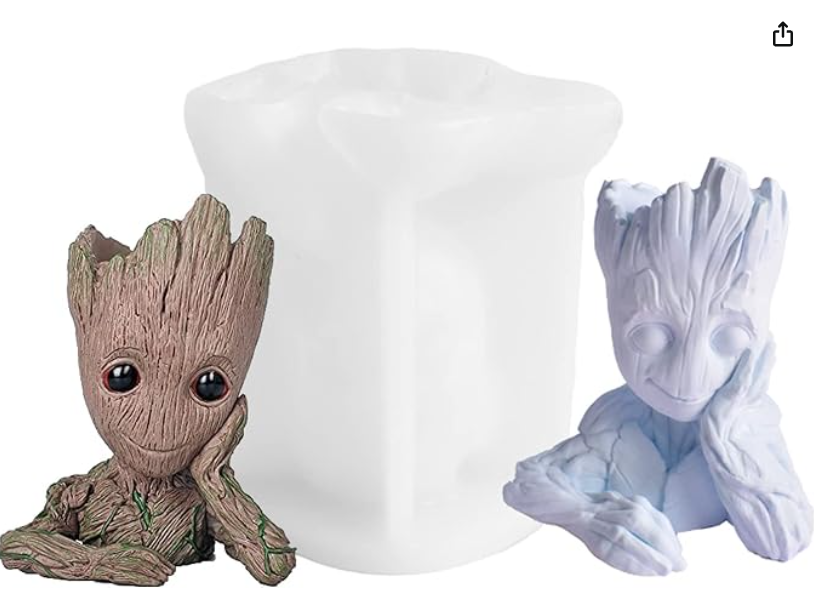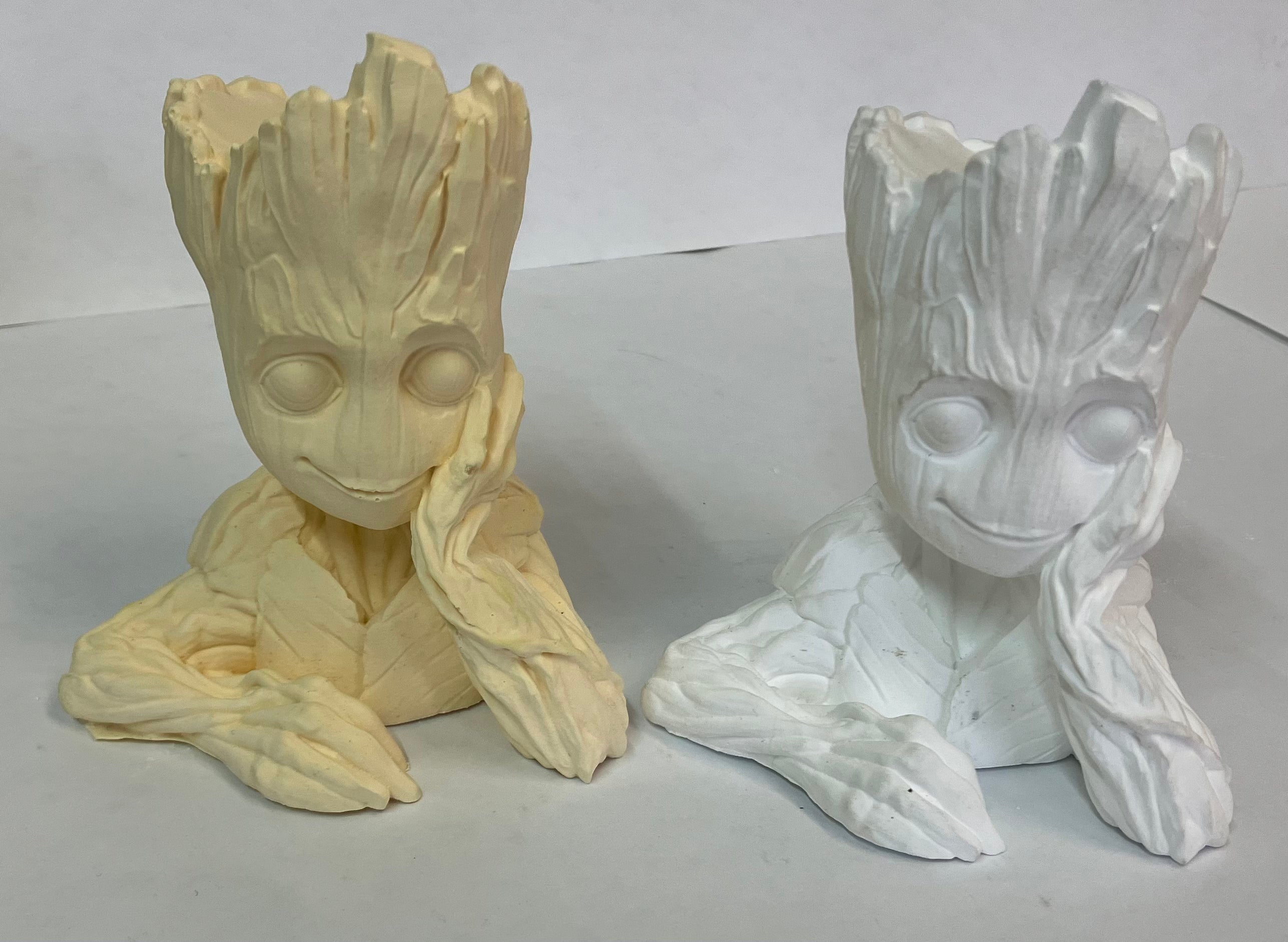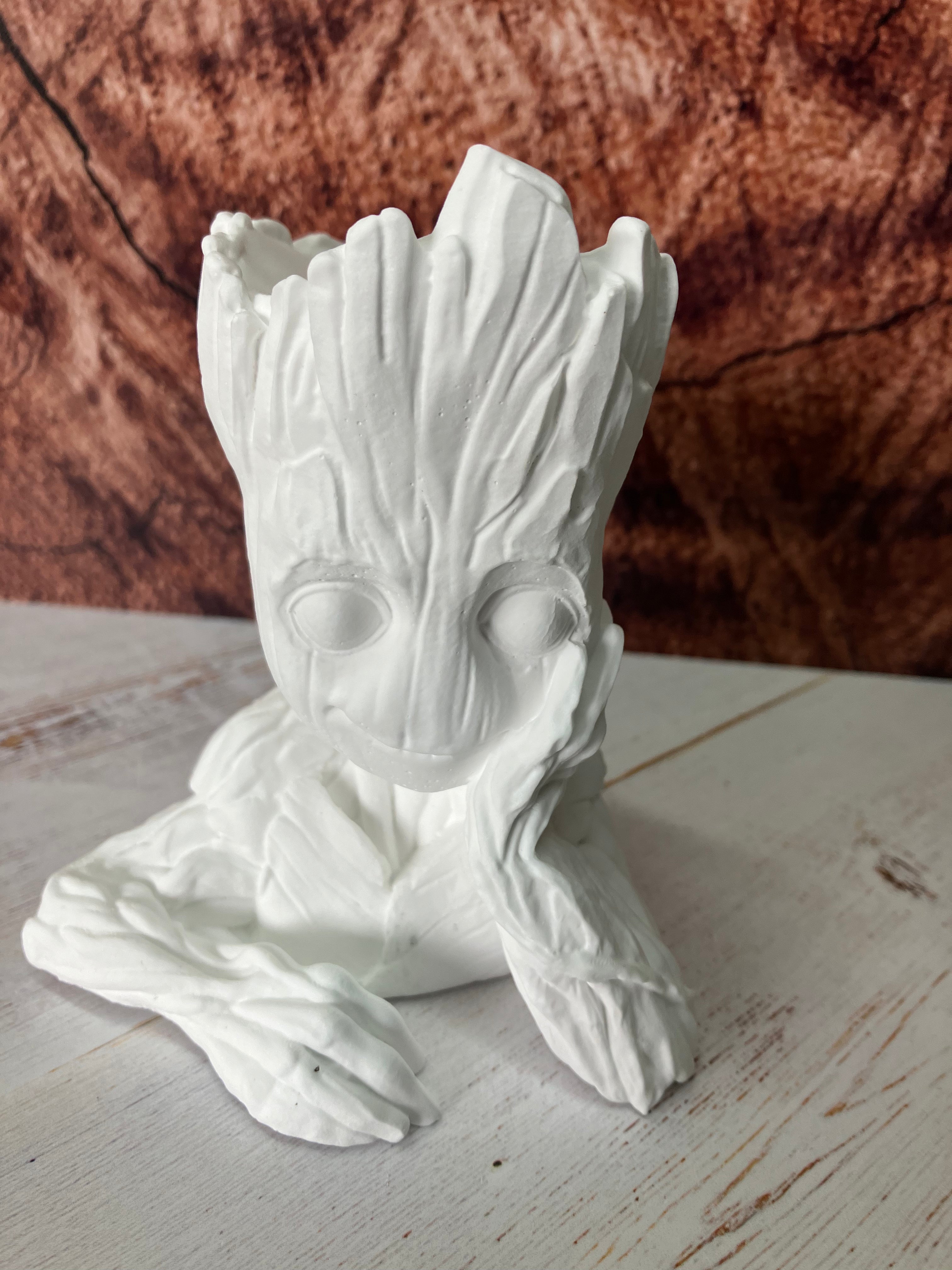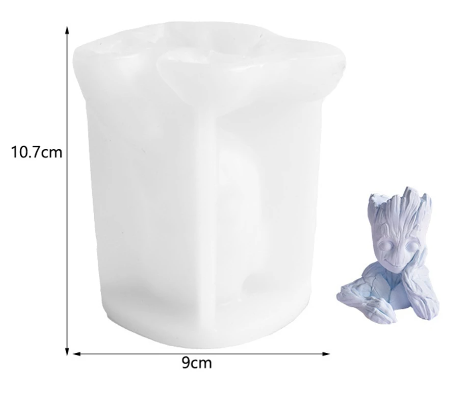Description
Groot Mould
(10.7CM X 9CM)
Here are a few simple tips to have successful cast after cast and a happy mold!
- Soap & Water - Keep your molds clean and before every cast use a small amount of dish soap and warm water to clean your molds. Silicone has a very high tolerance for extreme temperatures so when cleaning you never have to worry about warping the mold. Never use steel wool, scrubbing sponges, or anything abrasive like a toothbrush as this will cause tearing and scratching on the surface of the silicone. Damaged spots on the silicone mold can create sticky spots that material will adhere to and tear the mold when demolding your cast!
- Release Agent - Yes silicone is non-stick, and a fresh mold works great for the first few uses and then you start to have issues. That is because many manufactures use what is called a release agent when creating your mold. This is exactly what it sounds like and helps the mold release from the master in production as well as helps the first few casts release from the mold. You can purchase spray on release agents that are specifically designed for casting from various companies online. Using a small amount in a thin layer will increase the life span of your molds and make casting smaller, more complex shapes, much easier.
- No Torching - DO NOT torch the Epoxy Resin in these Silicone Molds to pop any air bubbles that have formed! Torching in the Silicone Mold with break down the silicone and eventually cause it to fuse to the Epoxy resin and tear the mold. Silicone can withstand 500F, torches put out 2800F. Even a rapid pass from 6"-8" will be enough to break down the Silicone Mold with repeated abuse. If you have air bubbles torch the resin in a separate container and then pour into the Silicone Mold. Also using a pressure pot while curing helps dramatically with the air bubble issue safely.
- No Over Stretching - When demolding your Epoxy Resin casts do not over stretch your Silicone Molds. This will lead to the surface of the cavity to become dull and begin to form tears that will shorten the lifespan of your mold. This includes unnecessarily inverted mold to pop out casts.
- Stuck Casts - If an epoxy resin cast seems stuck and won’t de-mold don’t panic and start tearing up the mold! First check that the cure time and temperature for the material you used are correct as this can cause the cure time to be shorter or longer depending on these conditions. This is usually a common issue and waiting longer for the cure and increasing the temperature does the trick. If the cast is still being stubborn throw the mold in the freezer for 30-60 minutes. This will not hurt the silicone and should make the cast pop right out.
- Molds are Perishable - Silicone Molds are perishable items that can be compared to paint brushes. They are used to create art pieces and over time need to be replaced. The better you take care of your Silicone Molds the longer they will last however overtime they will "dull" which means lose the sharp edges on the details of the mold. This is completely normal and with proper care can be slowed significantly, but not stopped.
- Read the Instructions for Your Epoxy Resin Product - This is an extremely critical step, even if you are used to a product it’s always a good idea to REREAD the label and refresh your knowledge as occasionally companies change and update their instructions. More importantly read and follow all safety warnings as these products are very strong chemicals that can potentially harm you if improperly used. If you cannot find the instructions or are not sure go to the epoxy resin brand's website as they will have them posted there.
- Layers - When casting with Epoxy Resin, depending on the product you do not want to pour more than 1/4" to 1/2" at a time depending on the products specifications. Some products are designed for Deep Pours and are clearly stated as such. If you pour too thick you risk boiling out your cast due to the exothermic reaction that occurs when the Epoxy Resin cures and will ruin your cast and most likely the mold. In addition pouring in layers reduces the occurrence of bubbles in your cast.





